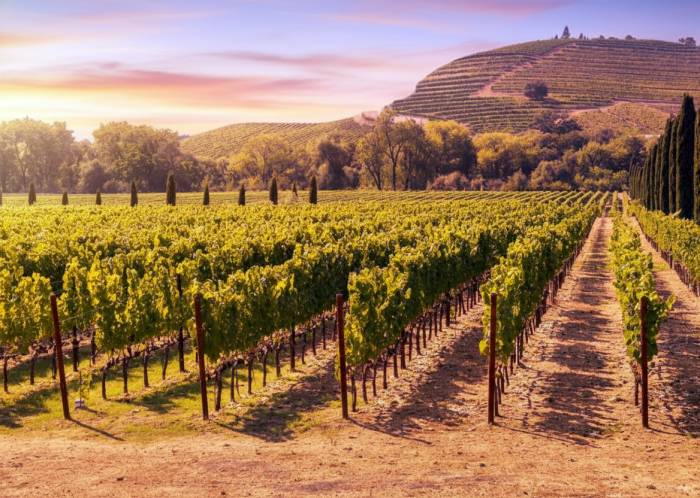French Investment in Napa Valley Surges as Bordeaux Influence Shapes $1 Billion California Wine Market
2025-11-11
Decades of cross-Atlantic collaboration bring Bordeaux expertise and climate challenges to the heart of America’s luxury wine industry

In the heart of Northern California, the Napa Valley has become a global reference for wine over the past several decades. Known for its bold Cabernet Sauvignons, constant innovation, and ultra-premium positioning, Napa attracts both investors and wine enthusiasts seeking iconic bottles. The region’s reputation has grown steadily since the 1970s, when a handful of pioneers began to challenge the established order of European wine. The turning point came in 1976 at the Judgment of Paris, where California wines outperformed their French counterparts in a blind tasting, shaking up the world of fine wine.
French interest in Napa began soon after. In 1979, Baron Philippe de Rothschild partnered with Robert Mondavi to create Opus One, aiming to produce a “grand cru” in California. This collaboration set the stage for further French investment. Over time, several Bordeaux families and winemakers have established themselves in Napa, each bringing their own expertise while adapting to local conditions. Christian Moueix, Bernard Portet, the Tesseron family, and Daniel and Florence Cathiard are among those who have left a mark on the region.
The arrival of major French groups accelerated around the turn of the millennium. LVMH, already well established in Bordeaux with properties like Château d’Yquem and Cheval Blanc, began acquiring Napa estates. Newton Vineyard was purchased in 2001, followed by Colgin Cellars in 2017 and Joseph Phelps Vineyards in 2022. However, LVMH sold Newton Vineyard in 2024 after devastating wildfires highlighted the risks of investing in California’s wine country. In 2013, François Pinault—owner of Château Latour—acquired Eisele Vineyard, known for its mineral-driven Cabernets. Axa Millésimes joined the trend in 2018 by buying Outpost Wines on Howell Mountain.
Christian Moueix stands out as one of the most influential Bordeaux figures in Napa. Born into a prominent Pomerol family, he studied agriculture in Bordeaux before moving to California to attend UC Davis in the early 1970s. There he met Robert Mondavi and was introduced to a more open and scientific approach to winemaking. In 1981, Mondavi offered him the chance to take over Napanook vineyard in Yountville. Two years later, Dominus Estate was born.
Moueix applied Bordeaux principles: careful vineyard management, controlled yields, and an emphasis on freshness and depth rather than sheer power. Early vintages were considered austere by American critics but have since gained recognition for their longevity and balance. The winery itself is notable for its modern architecture by Herzog & de Meuron—a striking black basalt structure that blends with the landscape while signaling innovation.
Dominus has also witnessed climate change firsthand. In September 2022, temperatures reached record highs—up to 122°F (50°C) in some areas—demonstrating that Napa is not immune to environmental challenges. Despite this, Moueix remains committed to producing wines defined by purity and elegance.
Michel Rolland is another Bordeaux figure who has shaped Napa’s style since the 1980s. As a consultant to about twenty wineries—including Harlan Estate and Dalla Valle—Rolland introduced techniques emphasizing ripe fruit and careful extraction. His influence helped define the “cult wine” era of California but also drew criticism for standardizing taste profiles.
Bernard Portet represents an earlier wave of Bordeaux influence. In 1970, at age 27, he was tasked by John Goelet to find a site for a new prestige estate in California. After months of research, he chose Stags Leap District and founded Clos du Val in 1972. Portet’s wines were selected for the Judgment of Paris and became known for their classic style—freshness and balance over opulence—even as trends shifted toward richer wines.
Alfred Tesseron brought his experience from Pontet-Canet in Pauillac when he acquired Pym-Rae on Mount Veeder in 2016. The steep vineyard had belonged to actor Robin Williams’ family before Tesseron converted it to biodynamic farming. His son Noé now leads operations with an emphasis on combining Bordeaux tradition with Californian terroir.
Beyond Napa Valley itself, other Bordeaux families have invested across California. Claire Villars and Gonzague Lurton established Acaibo Estate in Sonoma’s Knights Valley in 2012, aiming to blend Bordeaux precision with cooler Californian climates. Pierre Seillan’s Vérité wines from Sonoma are among America’s most sought-after bottles thanks to his blending expertise honed in France.
Daniel and Florence Cathiard are known for transforming Smith Haut Lafitte into a model estate near Bordeaux before purchasing Flora Springs near St. Helena in 2020—now Cathiard Vineyard. They immediately began converting it to biodynamics and focused on high-end hospitality inspired by their success at Les Sources de Caudalie.
The relationship between Bordeaux and Napa is no longer one-sided or competitive; it has become collaborative and reciprocal. Californian investors have also begun acquiring properties in Bordeaux—such as Heitz Cellar’s owners purchasing Château Lascombes—reflecting a new era of cross-Atlantic exchange.
For French winemakers and investors, Napa offers both opportunity and challenge: freedom from strict regulations, direct-to-consumer sales models, advanced environmental practices—and exposure to climate risks that mirror those faced at home. In return, they bring centuries-old expertise and a long-term vision that continues to shape California’s wine landscape.
Today, these connections are helping redefine luxury wine culture worldwide—where authenticity and exclusivity are valued on both sides of the Atlantic. The influence of Bordeaux can be tasted not only in Napa but throughout California’s vineyards from Sonoma down to Santa Barbara as French know-how meets American innovation on new ground.
Founded in 2007, Vinetur® is a registered trademark of VGSC S.L. with a long history in the wine industry.
VGSC, S.L. with VAT number B70255591 is a spanish company legally registered in the Commercial Register of the city of Santiago de Compostela, with registration number: Bulletin 181, Reference 356049 in Volume 13, Page 107, Section 6, Sheet 45028, Entry 2.
Email: contact@vinetur.com
Headquarters and offices located in Vilagarcia de Arousa, Spain.